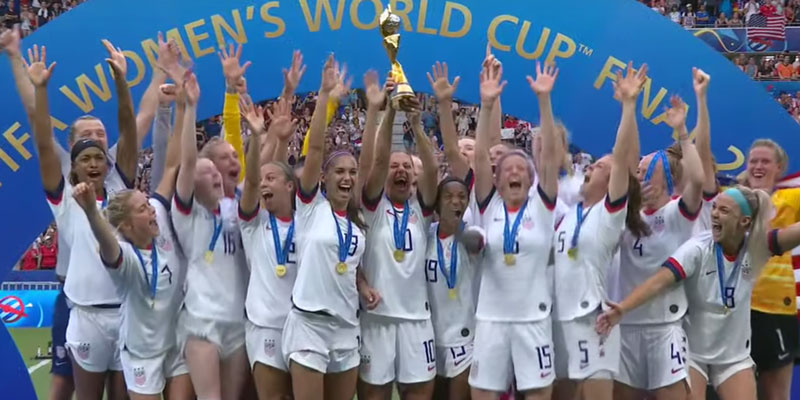The U.S. Women’s soccer team is fighting two battles this year. On the field in France, they successfully defended their World Cup title. In March, team members sued the U.S. Soccer Federation for gender discrimination. The case highlights gender pay equity and potential discrimination by sports fans.
Determining compensation is trickier than you might think, due to differences in numbers of games and whether either team is playing a World Cup. Court filings suggest that for an equivalent schedule, women are paid 62 percent less than men. If this is true, is it fair?
If you think pay should depend on performance, the U.S. women should make much more than our men. The women have won four World Cup titles and Olympic Gold medals each; the Men have never won either and failed to qualify for the 2018 World Cup.
If you think pay should depend on effort and hard work, equal pay probably seems fair. The members of both teams undoubtedly train and play extremely hard.
Economists would focus on revenue generation by each team. Total player compensation across major professional sports leagues is generally 50 to 60 percent of revenue. Economics would find the pay differential fair if based on a revenue difference.
Economics explains how athletes’ compensation depends on revenue, but is this fair? We can offer a fairness defense as follows. Participation on the national soccer teams, like all market activity, is voluntary. And fans choose voluntarily to attend games, watch on TV and purchase merchandise. Voluntary participation means that events like the Women’s World Cup make the world a better place than otherwise. And pay differentials provide people an incentive to supply more labor, if possible.
Sports economics also suggests why unequal pay may persist even with equal revenue. Competition between employers in labor markets drives salaries up to the value a worker generates. Competition in sports is less intense than other professions because athletes make so much more in their sport than other work. Salary caps and other measures can further limit bidding for players. U.S. Soccer could potentially indulge prejudices regarding gender and pay if desired.
Whether the soccer pay gap is due to revenue is unclear. Gate revenue from women’s and men’s matches has been equal since 2015, but the gate is only one component of overall revenue. Litigation will likely reveal the truth.
Let’s turn then to a more challenging question: do revenue differences reflect fan prejudice against women’s sports? The prize pool for the Women’s World Cup was $30 million, versus $400 million for the 2018 Men’s World Cup. Huge earnings differences also exist in professional basketball. In 2017-18, the average WNBA salary was $72,000, compared with a minimum NBA salary of $838,000. These enormous pay gaps are primarily due to differences in revenue. Do sports fans just not like watching women play?
Economists have tested for racial discrimination using sports data, particularly focusing on salaries from within the same sport. Different sports leagues, to my mind, represent different products. Economists generally attach little moral significance to people’s preferences across products. Americans like football more than soccer, but so what? Such differences in preferences simply make the world more interesting.
Differences in fan interest though may well be due to gender stereotypes and consequently be disturbing. Even so, separating gender stereotyping from other, less problematic, preferences would be difficult. Should we try to mandate equality in fan attendance and spending for the NBA and WNBA? Should companies have to sponsor both the men’s and women’s national soccer teams for the same amount?
The long run provides reason for optimism. Women’s sports are relatively new – the WNBA is 21 years old and the first Women’s World Cup was held in 1991 – and sports loyalties are often formed young. As gender stereotypes break down, fewer fans will be biased. The 2019 World Cup’s record TV audiences worldwide demonstrate progress. When the revenue gap between men’s and women’s soccer disappears, if it still exists, equality in pay should follow.
Daniel Sutter is the Charles G. Koch Professor of Economics with the Manuel H. Johnson Center for Political Economy at Troy University and host of Econversations on TrojanVision. The opinions expressed in this column are the author’s and do not necessarily reflect the views of Troy University.













